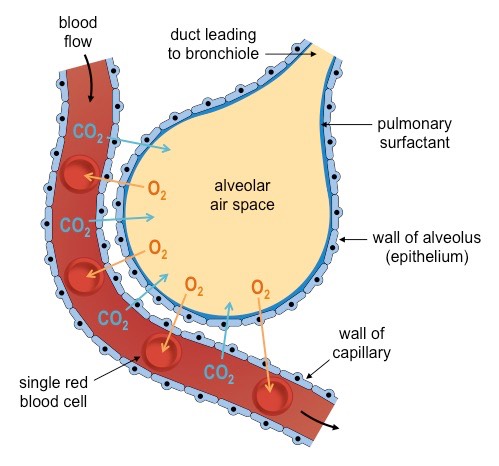![]()
Understanding:
• Air is carried to the lungs in the trachea and bronchi and then to the alveoli in bronchioles
The Respiratory System
- Air enters the respiratory system through the nose or mouth and passes through the pharynx to the trachea
- The air travels down the trachea until it divides into two bronchi (singular: bronchus) which connect to the lungs
- The right lung is composed of three lobes, while the left lung is only comprised of two (smaller due to position of heart)
- Inside each lung, the bronchi divide into many smaller airways called bronchioles, greatly increasing surface area
- Each bronchiole terminates with a cluster of air sacs called alveoli, where gas exchange with the bloodstream occurs
Structure of the Lungs


⇒ Click on the diagram to show / hide labels
Structure of an Alveolus
Alveoli function as the site of gas exchange, and hence have specialised structural features to help fulfil this role:
- They have a very thin epithelial layer (one cell thick) to minimise diffusion distances for respiratory gases
- They are surrounded by a rich capillary network to increase the capacity for gas exchange with the blood
- They are roughly spherical in shape, in order to maximise the available surface area for gas exchange
- Their internal surface is covered with a layer of fluid, as dissolved gases are better able to diffuse into the bloodstream
Alveolar Structure

